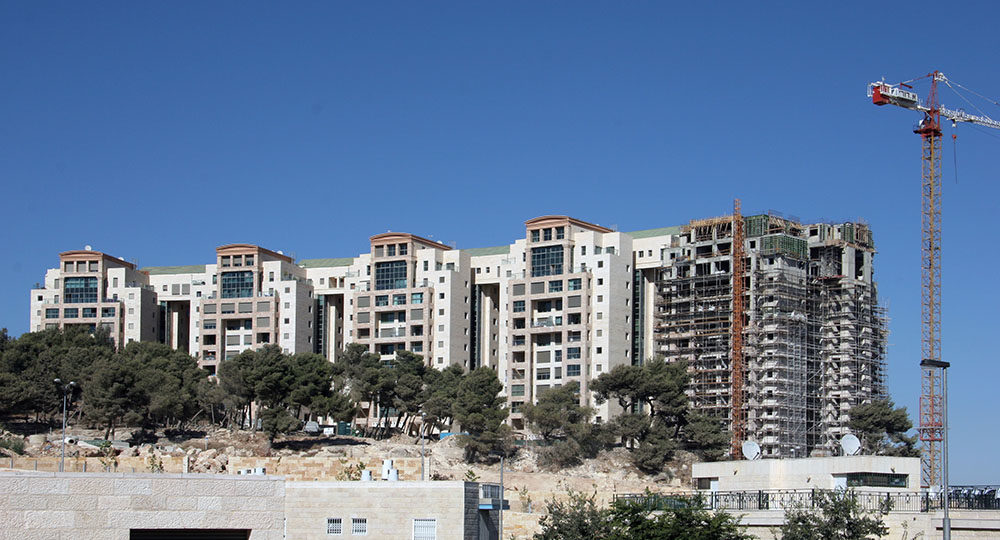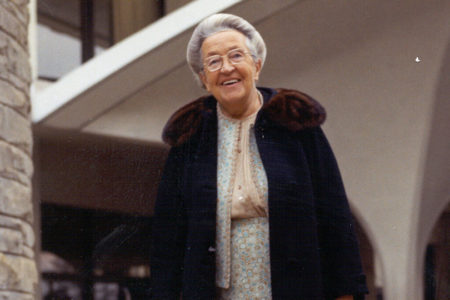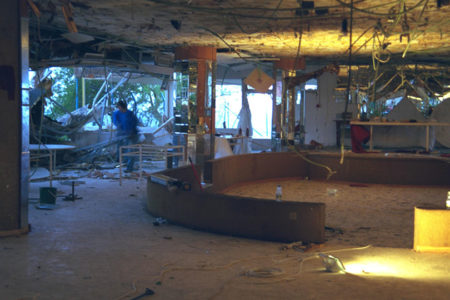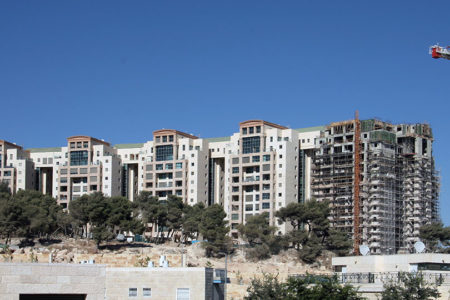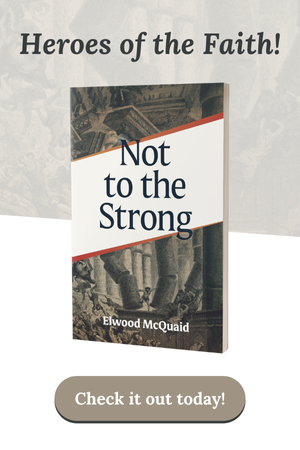To Build or Not to Build: Jerusalem’s Housing Controversy
In the minds of millions of Christians and Jews around the globe, Jerusalem is a spiritual symbol that transcends daily life. But for those of us who actually reside here, Jerusalem is much more of a tangible reality than a symbol of eternity.
We who are privileged to hang our hats in Israel’s ancient and modern capital are certainly reminded every day, if not every hour, about the spiritual significance of our special hometown. The magnificent stone walls and gates that surround the historic Old City, the Mount of Olives where the resurrected Messiah rose to heaven nearly 2,000 years ago, the Great Synagogue that ascends several stories above bustling King George Street, and the tall minarets with their blaring electric loudspeakers that call Muslims to prayer—all these and more are constant, concrete reminders of the importance Jerusalem holds for nearly half the people on Earth.
But contemporary Jerusalem is also the host of combatant city council meetings, occasional garbage strikes and constant road construction, pulsating youth discos and serene old-age homes, lush green parks and neglected open spaces, crowded banks and cramped corner grocery stores.
The Holy City is also the frequent site of substantial tussles between secular and religious Jews, competing Jewish and Christian religious sects, and—the mother of Middle East conflicts—the two groups that together comprise nearly 98 percent of the city’s current population of some 600,000 souls: Israeli Jews and Arab Muslims.
The central debate between Abraham’s quarreling offspring is focused on who should wield authoritative, if not exclusive, control over the most contested piece of real estate on Earth—the hallowed Temple Mount.
About the size of two football fields, the revered area where Islam’s golden Dome of the Rock and al-Aqsa Mosque sit today has spawned many a riot over the past hundred years. The Jewish people’s steady return from around the world, in fulfillment of Bible prophecy, has sparked bewildered chagrin and outright hostility from Muslims, who claim total, divinely sanctioned ascendancy over the entire Old City and indeed over every inch of the Promised Land from the Jordan River to the Mediterranean Sea.
While this ultimate struggle plays out like an intriguing who-done-it thriller on television screens around the world, daily life goes on in Jerusalem. And it is here, on the local stage, that another bristling battle is being waged. It is not some cosmic tug of war between bearded, black-robed men championing various paths to eternal bliss, but a more mundane struggle between dozens of building contractors with dollar signs gleaming from their eyes and many ordinary residents who wish the city to retain some of its traditional character and quaint old-world charm.
Million-Dollar Digs
The most recent clashes are over burgeoning apartment towers that many maintain block out daytime sunlight and obscure beautiful vistas. The housing towers are part of a master plan approved by city officials while Ehud Olmert, now prime minister, was Jerusalem’s mayor. It pushes for housing towers to be built wherever possible to utilize fully the dwindling open spaces inside the city’s sprawling municipal boundaries.
The nearly completed Holyland apartment complex is one such point of contention. Rising in the southwest section of Jerusalem on a hill above Teddy Stadium, many complain that the dominating structures, connected between their top floors by sky bridges, are an aesthetic eyesore. A newer complex containing several high-rise apartment towers is going up in the northeastern French Hill neighborhood. Nearby apartment dwellers say it is so massive that it blocks out daylight, especially during the cool winter months when the sun sits low in the southern sky. But at least these developments cater mostly to native Israelis. A series of high-rise, luxury condos and hotels being built around the center of the city come with a price tag most Israelis cannot afford. Prices start around $1 million for a full-sized apartment. Wealthy American and European Jews eager to own a second home in the Holy City are the main sales targets.
The most ambitious construction project under way is called Jerusalem of Gold—aptly named, say some folks, because you need to own tons of gold bullion to purchase one of the condos! Located on the south side of King George Street not far from Jerusalem’s Great Synagogue, the luxury housing complex is rising in two stages a few blocks west of the walled Old City and even closer to the popular Ben Yehuda outdoor pedestrian mall. Preparation work has already begun on the sprawling building site, just a two-minute walk from central Jerusalem’s main public green space, Independence Park.
The initial apartment building will slope from eight to 12 floors. It was originally designed to house 120 units, but wealthy buyers—mostly from America—are already busy redesigning the preliminary architectural floor plans, decreasing the number of condos to around 80 and adding to the cost of the expanded apartments. The complex’s more controversial second stage features a 24-story tower south of King George Street. When completed around the year 2010, it will be one of the tallest structures in Jerusalem’s modern city center.
Catering mainly to Orthodox Jews, all Jerusalem of Gold kitchens are being designed with strict kosher dietary laws in mind. Unless altered by the buyer, every apartment will feature two sinks and separate meat and dairy cupboards and drawers to cater to traditional religious requirements. Each condo will also include an open balcony suitable for construction of an annual sukkah (booth) during the autumn Feast of Tabernacles. Hotel-style staff will be on site at all times to maintain the apartments for their mainly overseas owners and to prepare the condos for occupancy prior to the owners’ arrivals.
A Potential Concrete Ghost Town?
Although current downtown area residents generally welcome the massive development, many worry that it could turn out to be a high-rise concrete jungle largely deserted by its non-Israeli residents during much of the year.
Project manager Yoram Shechter admits that most of the presold condos have been purchased by wealthy North American, European, and South African Jews who mainly plan to live there during the biblical holidays. Still, he maintains that many flats will be occupied year-round—some by resident Israelis—and that public shops and restaurants planned for the bottom floors will insure a constant flow of traffic around the cascading structures.
Shechter’s contentions do not impress some city council members. Those most opposed are from Orthodox and leftist political parties that champion more affordable housing for the local public. They note in particular that many younger Jerusalem couples are forced to locate farther away in the suburbs to afford a home of their own.
Councilman Pepe Allalu from the secular Meretz party objects in particular to the height of the main Jerusalem of Gold tower, which he points out will dwarf most surrounding buildings. “Jerusalem is an historical city with a legacy. You can’t just erect a 24-story apartment building at will,” he said. Israel’s most prominent environmental activist group, the Society for the Protection of Nature, filed the only formal petition against the project, arguing that such high-rise towers within site of the Old City’s famous walls blur Jerusalem’s special topographical form.
In objecting to the Jerusalem of Gold project, some urban planning experts pointed to the prestigious David’s Village, a low-density condo complex completed over a decade ago in a revitalized neighborhood just below the Old City’s Jaffa Gate. They noted that it sits largely empty most of the year, like a phantom ghost town or a Hollywood movie set.
Respected Hebrew University urban geography professor, Amiran Gonen, berated the project for “not creating any real human traffic in a strategic location.” He noted that no other international urban center has its central business district squarely adjacent to an ancient, walled, old city containing spiritual sites that are highly significant to several world religions. He said these conditions give Jerusalem city planners a special responsibility when considering major downtown construction requests.
City Planning Commission head, Yehoshua Pollack, who also serves as a deputy mayor, defended the Jerusalem of Gold dimensions. “We have no problem with this, since building more densely in the center of Jerusalem will help revitalize the city.”
Indeed, most local merchants and restaurant owners seem quite happy with the upscale housing addition, even if most of the wealthy condo owners are only in town a few weeks every year. “They will spend more in a day than some locals can afford to dole out over five years,” said the manager of a nearby retail clothing outlet.
Other Projects Going Up
At least four other high-end apartment and hotel building projects are also in motion around Jerusalem’s modern city core. Work began two years ago on a luxury apartment building next to the Vatican-owned Notre Dame Hotel, across from the Old City’s Christian Quarter.
Another project is going up near Jerusalem’s main business street, Jaffa Road. Twin nine-story apartment towers are rising next to the century-old Russian Compound, which houses Jerusalem’s main downtown police station and jail. Nearby residents express general support for the towers, being built by a large Africa-Israel construction consortium. They are especially happy that bulldozers are plowing under several one- and two-story buildings that have housed popular pubs attracting a noisy, nighttime young-adult clientele.
Two other building projects have drawn far more local opposition. The oldest, approved by city officials in 1999, is humbly called the King David’s Crown condo development. It is being constructed in a transformed sports field behind the landmark YMCA building on King David Street, which itself lies across the street from the prestigious King David Hotel, within sight of the Old City’s walls.
Giant cranes were moved into the former field behind the international Christian center in 2004 after several years of round-the-clock pounding to carve a deep crater out of solid rock and dirt. Local residents originally objected to the eight-story height of the upscale project, which will dwarf the YMCA (apart from its landmark tower) and a series of long-established four- and five-story apartment buildings located along nearby George Washington Street.
Many were angered to learn last year that developers had reneged on written commitments to include two public buildings on the premises, one housing a community center with a library and kindergarten and the other a public sports complex.
A second large-scale development, involving new hotels, expensive private homes, and luxury apartments, finally got underway a couple blocks south of the YMCA after nearly a decade of criticism. More recently, a proposed Four Seasons hotel has been the center of controversy. It apparently has expanded from seven stories to at least 13.
As the prophesied last days of history draw near—featuring a worldwide battle centered on the very place that the God of the universe chose for His special resting place on Earth—the far more mundane construction tussles over Israel’s contemporary capital city will apparently continue to stir up dust in this unique Holy City.
